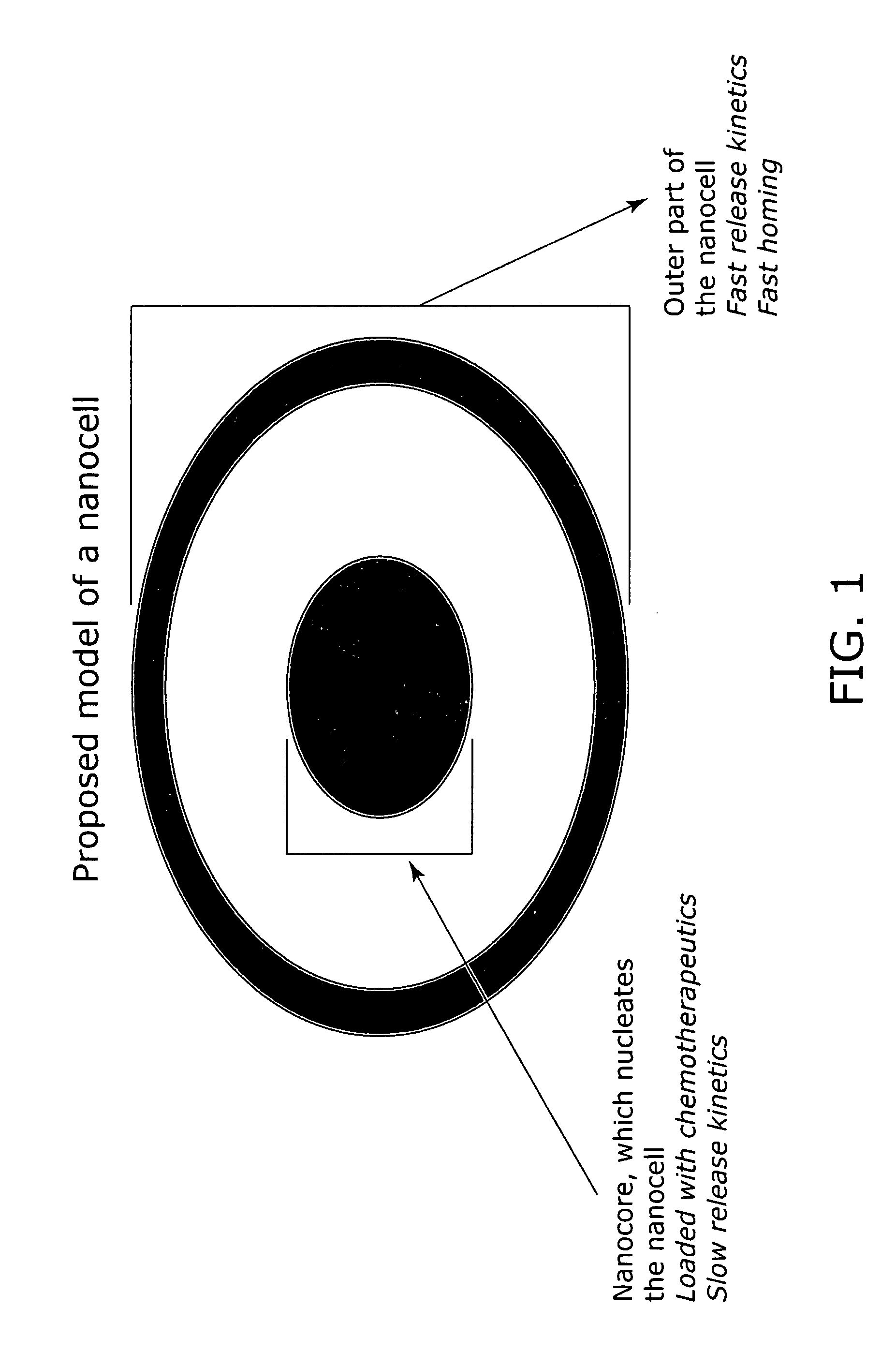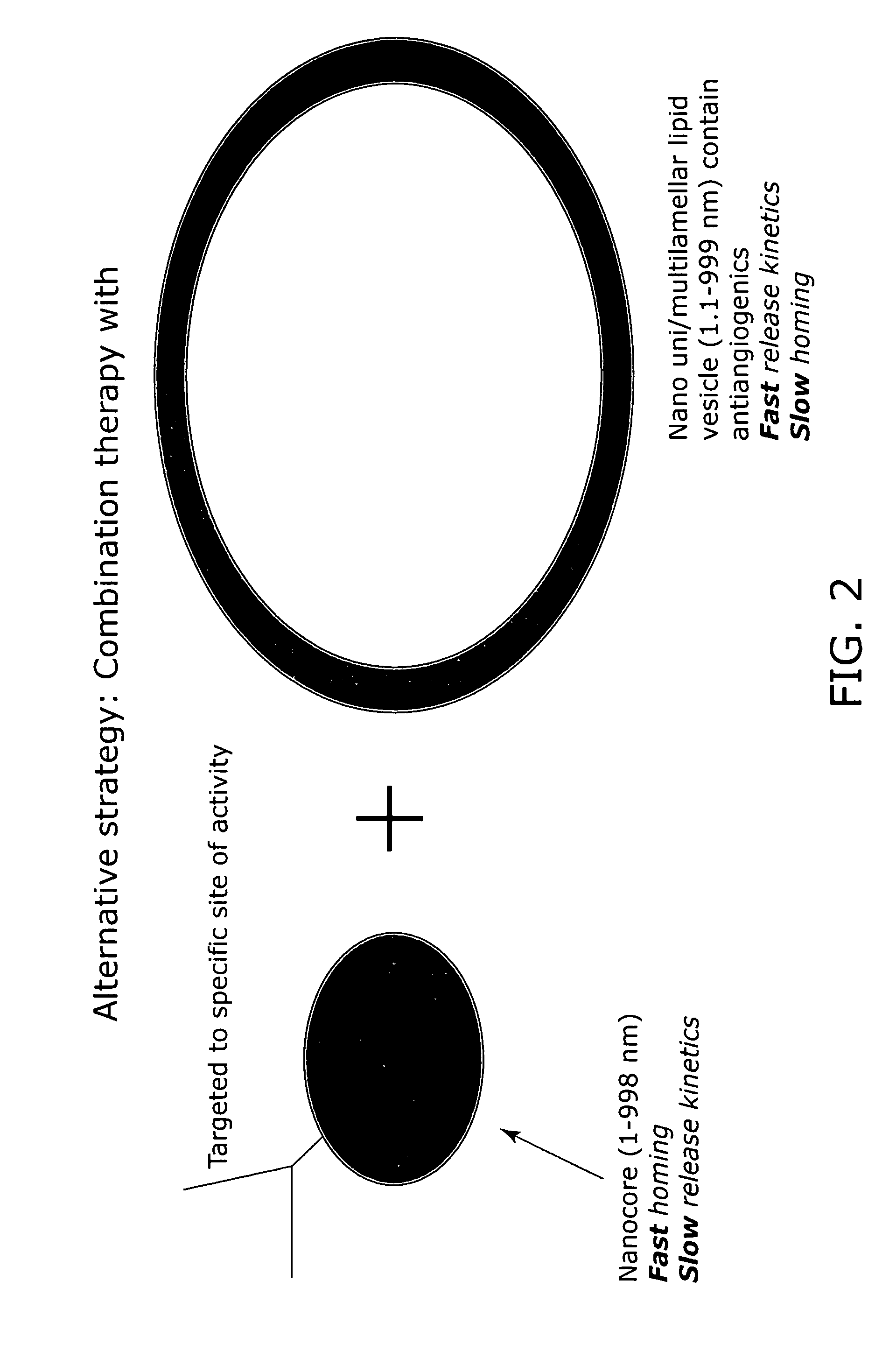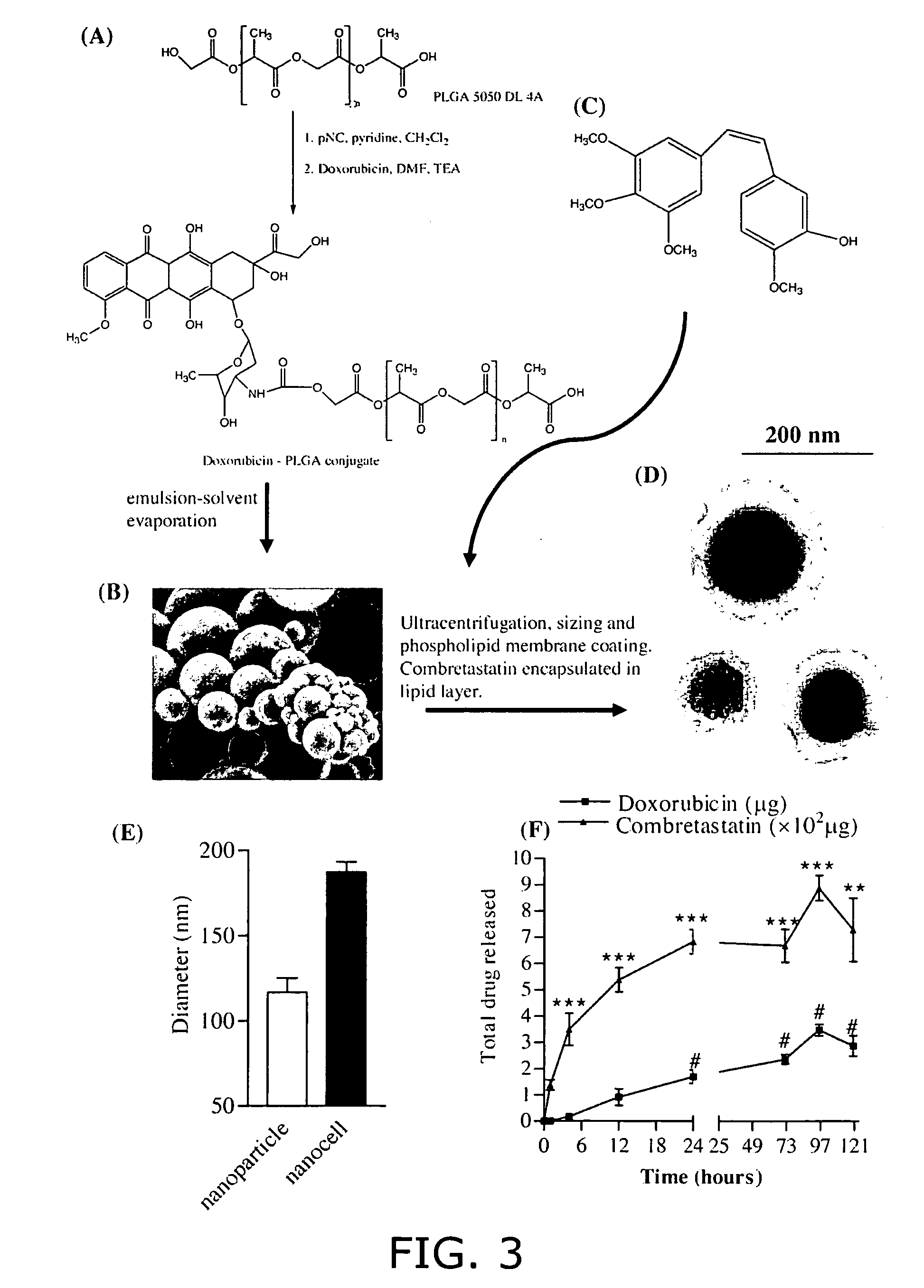Nanocell drug delivery system
- Summary
- Abstract
- Description
- Claims
- Application Information
AI Technical Summary
Benefits of technology
Problems solved by technology
Method used
Image
Examples
example 1
Synthesis and Analysis of Nanocells
[0179] (A) Conjugation of Doxorubicin to PLGA (FIG. 3). Polylactic glycolic acid (PLGA) (Medisorb® 5050 DL 4A), having a lactide / glycolide molar ratio of 50 / 50, was obtained from Alkermes (Wilmington, Ohio). The average molecular weight of this polymer is reported to be 61 kDa, and it has free hydroxyl and carboxylic groups at its terminal ends. Doxorubicin hydrochloride, p-nitrophenyl chloroformate, and triethylamine were obtained from Sigma-Aldrich (St. Louis, Mo.). Briefly, 1.5 g of PLGA 5050 DL 4A was dissolved in 15 ml of methylene chloride and activated by the addition of 14 mg of p-nitrophenyl chloroformate and 9.4 mg (˜9.6 μL) of pyridine to the solution, kept in an ice bath at 0° C. (stoichiometric molar ratio of PLGA: p-nitrophenyl chloroformate: pyridine=1:2.8:4.7). The reaction was carried out for 3 hours at room temperature under nitrogen atmosphere. The resulting solution was diluted with methylene chloride and washed with 0.1% HCl a...
example 2
Developing the Novel in Vitro Assay System
[0187] Protocol: For setting up the system, human umbilical vein endothelial cells, pooled from three donors, were purchased from Cambrex, and used between passages 3-6. The cells were grown in endothelial basal medium supplemented with 20% fetal bovine serum (FBS) and bulletkit-2 (Sengupta et al. Cancer Res. 63(23):8351-59, Dec. 1, 2003). For the tumor component, we used B16 / F10 melanoma cells as the model cell line, which were stably transfected to express green fluorescent protein. Plasmid expressing enhanced green fluorescent protein (pEGFP-C2, Clontech) was linearized and lipofected (Lipofectamine 2000, Invitrogen) into B16-F10 cells. The stably integrated clones of B16-F10 cells were selected by 800 μg / ml G418. The green fluorescence of the G418 resistant clones was further confirmed by Flow Cytometry and epifluorescence microscopy. The GFP-B16 / F10 cells were regularly cultured in DMEM supplemented with 5% FBS. Sterile glass coverslip...
example 3
In Vitro Efficacy of Drug Loaded Nanocells (FIG. 9)
[0192] Sterile glass coverslips (Corning) were coated with matrigel (extracellular matrix extracted from murine Englebreth-Holms sarcoma, diluted 1:3 in phosphate buffer saline; Becton Dickinson) or collagen (type I from rat's tail, Becton Dickinson). Synchronized human umbilical vein endothelial cells were trypsinised and plated on the coverslips at a density of 2×104 cells per well. The cells were allowed to adhere for 24 hours in endothelial basal media supplemented with 20% fetal bovine serum. At this time point, the media was replaced with EBM supplemented with 1% serum, and green fluorescent protein-expressing B16 / F10 cells were added to the system at a density of 5×103 cells per well. The co-culture was allowed to incubate overnight, following which different treatments were added to the media. At 24 hours post-treatment, the cells were fixed in paraformaldehyde (4% on ice, for 20 min), and stained with propidium iodide. The...
PUM
| Property | Measurement | Unit |
|---|---|---|
| Fraction | aaaaa | aaaaa |
| Fraction | aaaaa | aaaaa |
| Fraction | aaaaa | aaaaa |
Abstract
Description
Claims
Application Information
 Login to View More
Login to View More - R&D
- Intellectual Property
- Life Sciences
- Materials
- Tech Scout
- Unparalleled Data Quality
- Higher Quality Content
- 60% Fewer Hallucinations
Browse by: Latest US Patents, China's latest patents, Technical Efficacy Thesaurus, Application Domain, Technology Topic, Popular Technical Reports.
© 2025 PatSnap. All rights reserved.Legal|Privacy policy|Modern Slavery Act Transparency Statement|Sitemap|About US| Contact US: help@patsnap.com



